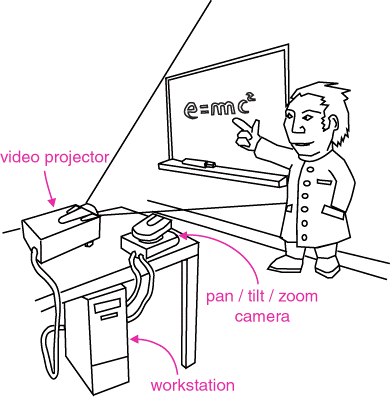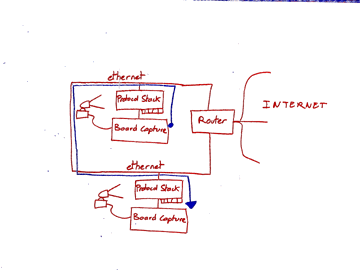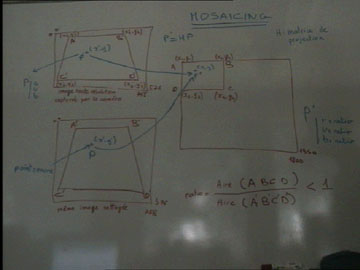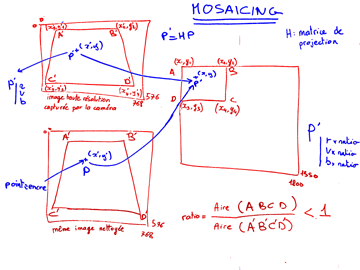The MagicBoard
The user works on the board as in the usual way, drawing or writing with ordinary marker pens. Whenever she chooses, the user can "grab" an electronic copy of the things that have been drawn or written with the marker pen. This copy is projected back onto the board, precisely overlaying the original markings with the appropriate colour. The physical ink may then be erased and the electronic version manipulated on the board's surface: it can be duplicated, moved, enlarged or reduced, printed, or hidden for a moment before being recalled. Meanwhile, the user may add to her designs with the marker pen as before. At any time, these new markings can be turned into digital form to merge with the electronic version of her work.

 The video-clip on the left (19.6 Mb) shows the system in use.
If your browser can't play the video, either download the quicktime player, or try an mpeg encoded (36.9 Mb) version of the video. Set your monitor to "thousands"
of colours for best results.
The video-clip on the left (19.6 Mb) shows the system in use.
If your browser can't play the video, either download the quicktime player, or try an mpeg encoded (36.9 Mb) version of the video. Set your monitor to "thousands"
of colours for best results.
- Two people are using the board for brainstorming. They begin a drawing with their regular marker pens.
- They decide to duplicate their initial drawing and so, by gesturing at a menu projected in the top right-hand corner of the board, obtain a selection pointer. This pointer tracks a finger to the edge of the drawing. A pause for half a second causes the pointer to change into a projected selection box, which is then dragged around the whole of the drawing. Note that all mode changes are performed by pausing for half a second.
- An initial instantaneous low-resolution grab is executed by the system so that the user can immediately move the copy of the drawing.
- On user's request, by selecting a command from the popup menu, a high resolution grab is executed. The pan-tilt-zoom camera is driven to grab the selection divided in 4 parts.
- The drawing is then completed with both physical and electronical ink.
- Finally, the user requests a global copy of the board. This copy is shown below.
Note that the electronic ink does not show up very well in this video due to technical difficulties in filming video projection. In the actual setting, the physical and electronic inks are comparable.



Sébastien Annedouche
Benoît Loup
Michel Prodhomme
Yann Laurillau
David Thevenin
Leon Watts
William Astier
Eric Saund's ZombieBoard